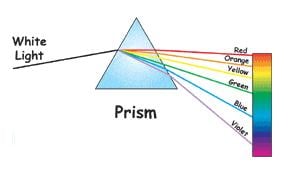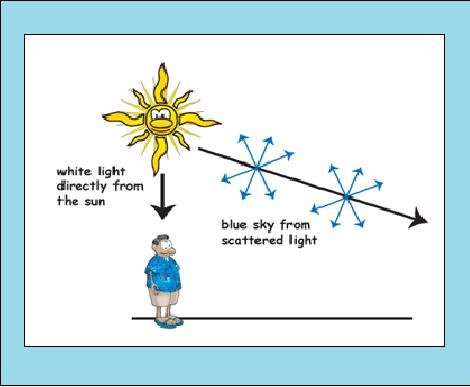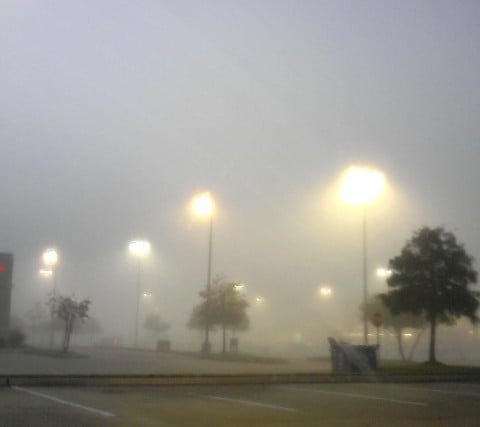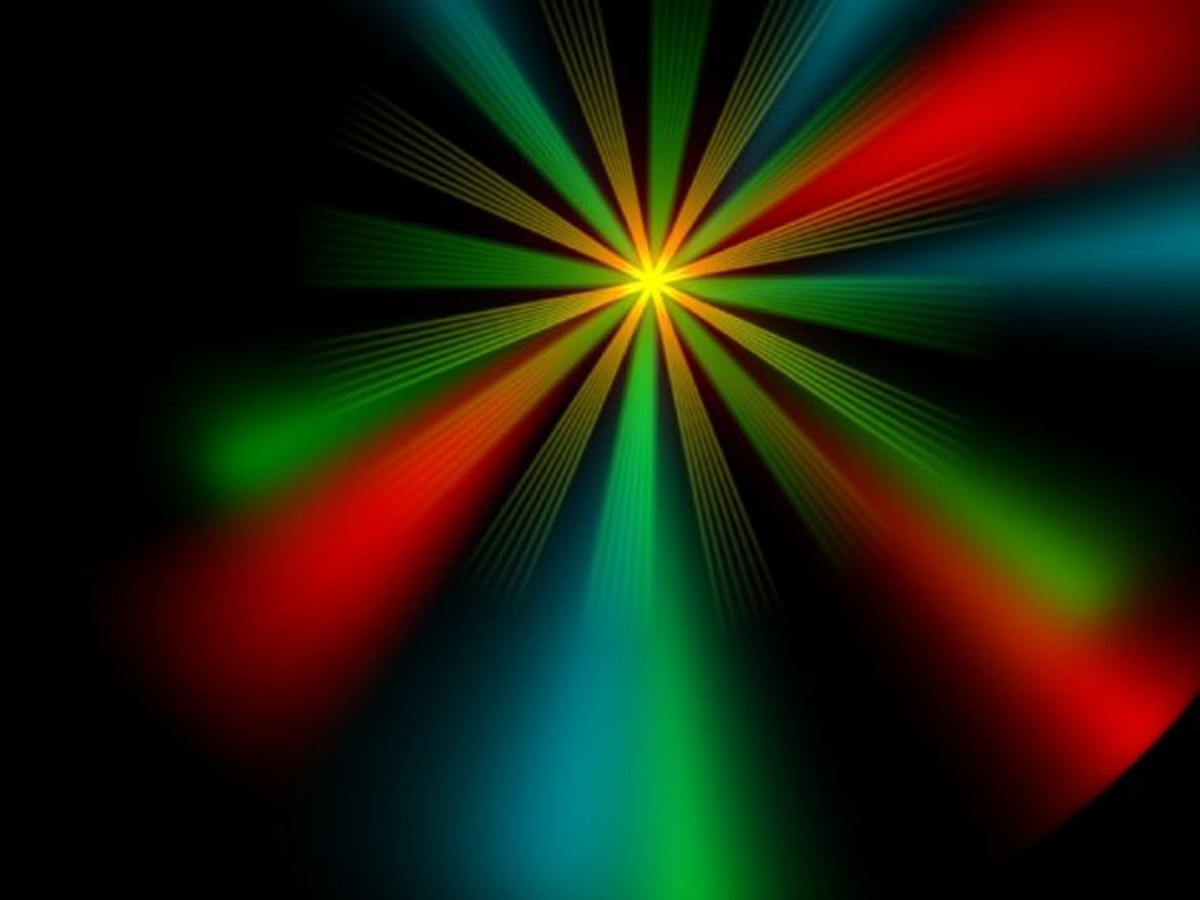The Clear, Blue Sky: The Science Behind Why the Sky Is Blue

By Joan Whetzel
One of the most asked questions of all time is "Why is the sky blue?" How many parents have tried to answer that question for their kids? It has taken scientists a long time to figure out the answer to it, so here's the simple explanation. Beginning with a basic understanding of light and refraction.
Light
To the human eye, the sun's light appears white. However, the color white is made up of all the colors. In fact, the color white, reflects all the colors, making them appear as one color. When breaking down white into its individual colors, scientists have discovered that each color consists of its own light wave, which oscillates at a different wave frequency, depending on the color. Red light, at one end of the visible light scale, oscillates at a longer, slower cycle with a wavelength of about 700 nanometers, while blue (the color of the sky), which is closer to the other end of the visible light scale, oscillates in a short, choppy cycle at wavelength of approximately 450 nanometers.

Isaac Newton first discovered the idea of breaking light into its component colors when he applied light to a prism. Later, scientists found ways to measure the wavelengths of each color.
Refraction

Prisms are specially shaped crystals that, when light is applied to them, will separate light into its individual colors. Light travels in straight lines. However, when it encounters an object, the light will do one of three things:
1. The light will be reflected (off a mirror or the moon's surface).
2. The light will be bent and split into its individual colors (when shined through a prism).
3. The light will scatter (when passing through the gasses of a planet's atmosphere).
In the case of the Earth's atmosphere, the third principle applies. The gasses of Earth's atmosphere cause the Sun's light to scatter.
Atmosphere
Clear, sunny daytime skies appear blue because the atmospheric gases and particles scatter the blue light waves more than any other color of light because blue's light waves are shorter and smaller. It's sort of like the blue light waves get really excited, whereas the other colors just kind of get bored and don't stick around. The other colors are still there, they're just passing through without staying for the party. In the early morning hours as the sun comes up and in the evening hours when the sun goes down, the gases and particles in the Earth's atmosphere excites the orange and red light waves instead, producing the characteristic reddish-orange sunrise and sunset.

Looking straight up, the sky appears a darker blue, while looking straight outward, toward the horizon, the sky appears lighter in color. The reason for that is because the light has to travel a shorter distance when traveling straight down, so the blue light is more intense. when travelling across the sky from the horizon, the blue light has to travel through more of the atmosphere to get to your eyes, so it loses a bit of its intensity or energy along the way, making it appear a lighter blue.
Tyndall Effect
John Tyndall made another discovery in 1859 that helped explain why the sky is blue. He determined that, as light passes through clear liquids with small particles suspended in those liquids, the blue light waves scattered more strongly than the other colors. As an experiment, try adding a little milk or soap to a tank full of clear water, then shine a white light through it. The milky, semi-opaque water will scatter the blue light-waves along the path of the light beam. In the picture below, the fog scatters the light produced by these parking lot lights. Only in this case, the fog tends to scatter the yellow light-waves.

This phenomenon was labeled the Tyndall Effect, after its founder, however, scientists refer to it as Rayleigh Scattering, after Lord Rayleigh who conducted more extensive studies into the phenomenon. Lord Rayleigh further explained the blue sky this way: Blue light (700) is scattered more than red light (400) at a rate that is inversely proportional to the fourth power. Explaining that in equation form: (700 ÷ 400)4 ≈ 10. For most kids, though, this is TMI (too much information). Unless the child is challenged by learning this level of physics, it might be best to skip that part.
For further experimentation in this area, check out the Blue Sky Science Project at Exploratorium
http://www.exploratorium.edu/snacks/blue_sky/
References
NASA. Why Is the Sky Blue?
http://spaceplace.nasa.gov/blue-sky/redirected/
University of California, Riverside. Why Is the Sky Blue?
http://www.math.ucr.edu/home/baez/physics/General/BlueSky/blue_sky.html
Science Made Simple. Why Is the Sky Blue?
http://www.sciencemadesimple.com/sky_blue.html
Best SAD Lights. Visible Light.





